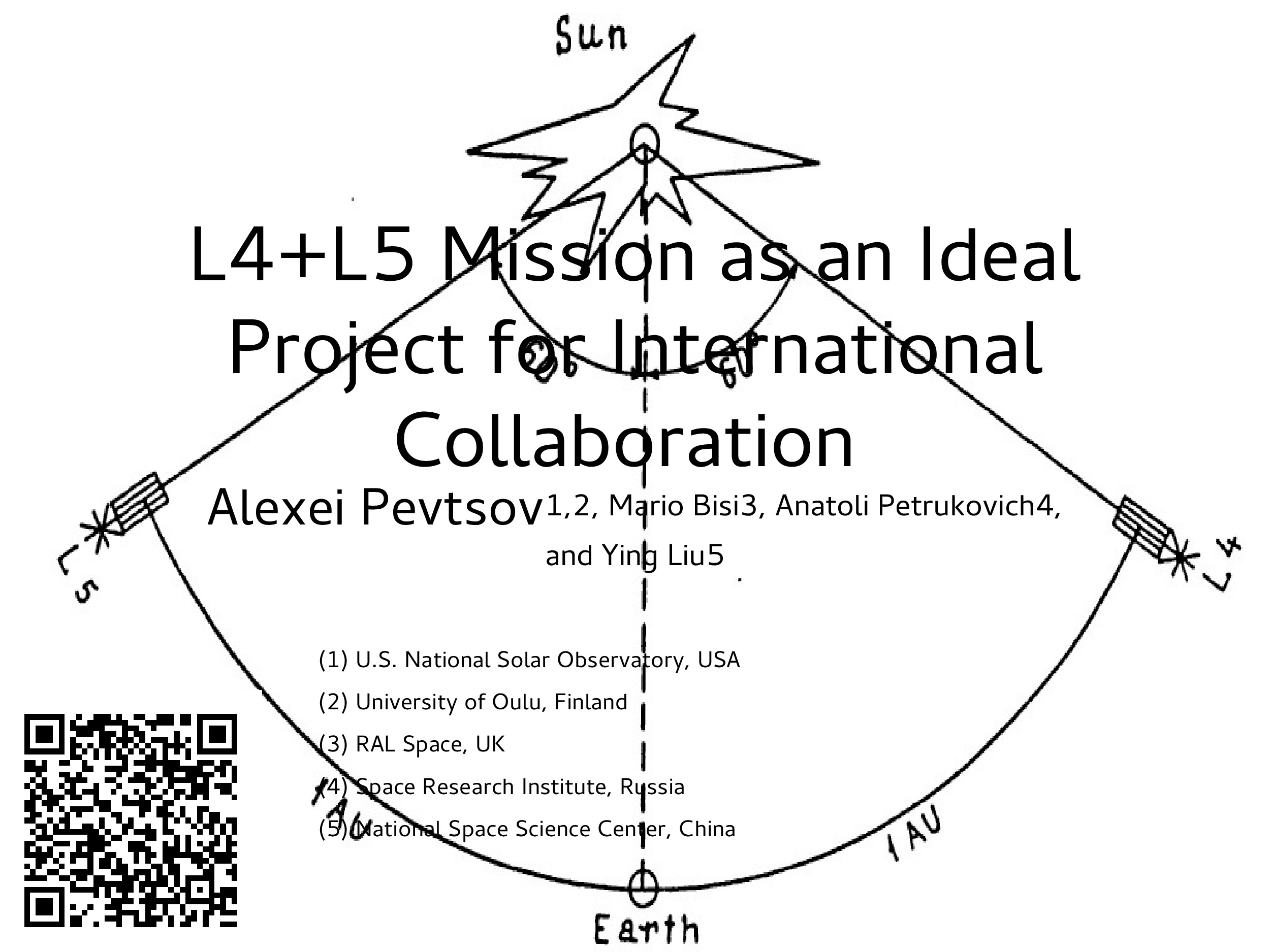Affiliation
Workshop on L5 in Tandem with L1 : Future Space Weather Missions, London, U.K., 6-9 March 2017
Main category
Natural Sciences (Astrophysics and Astrononmy)
Abstract
Having satellites positioned in-orbit at both Lagrangian L5 and L4 points offers several major advantages. For example, the L5 vantage point provides an early view of the solar surface, which Earth will be facing 4-5 days later. In turn, the L4 viewing point enables a better view of the source regions of eruptions responsible for SEPs affecting the near-Earth environment. Taken together, observations from L4 and L5 cover about 83% of solar surface, which will significantly improve both short- and long-term forecasts. However, in the most likely scenario that funding will support only a single L5 mission, not both, one alternative that the space weather community may want to explore is to encourage other spacefaring nations such as Russia, China, and India, to launch their own spacecraft to L4 in close coordination with the L5 mission. Launching two separate spacecraft to L4 and L5 will allow us to reap the benefits of having two new vantage points for space weather in addition to the L1 vantage point, to more-fully share the costs of such combined missions, and avoid the restrictions related to the transfer of technology (predominantly affected the L5 and L1 concepts to date).
DOI
10.18147/smn.2017/presentation:249
Do you have problems viewing the pdf-file? Download presentation
here
If the presentation contains inappropriate content, please
report the presentation. You will be redirected to the landing page.
